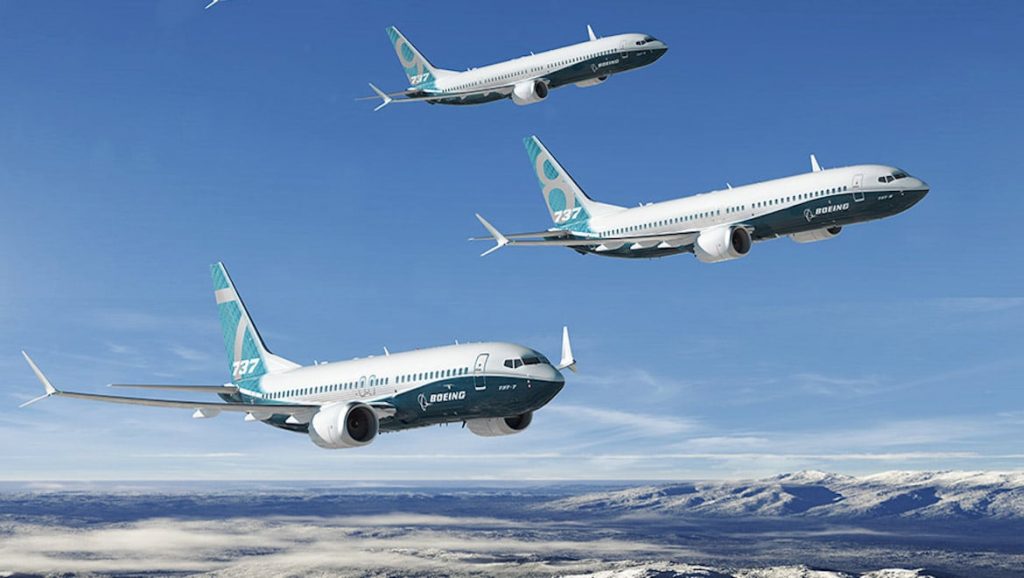
Recertification efforts continue, as regulatory scrutiny grows, for the embattled Boeing 737 MAX. Meanwhile, FAA law reforms are set to pass, while Boeing continues its battle on two fronts.
EASA tests completed, JOEB meetings scheduled
The European Union Aviation Safety Agency (EASA) has successfully completed its flight tests on the 737 MAX in Vancouver, following the tests carried out by Transport Canada late last month.
The EASA has said it will now review and analyse the data from the flights against that collected by the US Federal Aviation Administration (FAA).
Meanwhile, a review into future flight crew training practices under the updated 737 MAX is due to begin today in London, another key milestone for the aircraft’s impending return to service.
The FAA said that the Joint Operations Evaluation Board meeting for the Boeing 737 MAX recertification efforts will meet at London Gatwick Airport for approximately nine days, in order to “review Boeing’s proposed training for 737 MAX flight crews”.
The board will include civil aviation authorities and airline flight crews from the United States, Canada, Brazil and the European Union.
Boeing has said previously that it expects to win necessary approvals “in time to support resumption of deliveries during the fourth quarter”.
Boeing executives defend the MAX’s design in front of Congress
Meanwhile, testimonies of two senior Boeing executives made in front of the US congress back in May have now come to light, showing that higher-ups involved in the development of the 737 MAX were unaware of some key details about MCAS and other MAX features during development.
According to the transcript reportedly seen by Reuters, Michael Teal, then 737 MAX chief product engineer, and Keith Leverkuhn, who was vice president and general manager of the 737 MAX program, were questioned separately by investigators for the US House Transportation and Infrastructure Committee in May.
At that time, both continued to defend the 737 MAX design details linked to the two fatal crashes in Ethiopia and Indonesia that killed a total of 346 people.
These transcripts have been revealed a week ahead of the release of the final report into the House’s investigation.
At the time, Leverkuhn told investigators “I don’t consider the development of the airplane to be a failure”, as he defended the decision to link the new automated safety software system, called MCAS, to a single sensor angle of attack sensor, the design flaw that has largely been blamed for the 737 MAX crashes.
The planemaker has since announced a change to the system that will read data from two separate AOA sensors.
“I think based upon our understanding and our assumptions of flight crew actions, that it wasn’t a mistake,” Leverkuhn said in the hearing.
Later in his testimony, he added, “Clearly what was in error was our assumptions regarding the human machine interaction. Because the process relied on the industry standard of pilot reaction to a particular failure. And what was clear post accidents was that assumption was incorrect.”
Congress also heard that Boeing had not effectively planned for any outcome that would result in the FAA requiring additional simulator training specific to the 737 MAX.
Teal told Congress investigators that Boeing would have created specific simulator training requirements if it believed the 737 MAX design warranted it.
However, the planemaker had long promised that additional training would not be necessary, with Teal telling Congress that airlines would “of course” be displeased if more training was required.
In January of this year, following the two crashes and prior to recertification efforts on the grounded aircraft, Boeing reversed its course and said it would recommend additional simulator training for all pilots, before the MAX returns to service.
Teal, now the 777X chief project engineer, said that Boeing has since revised a number of its pilot assumptions in the aftermath of the 737 MAX crashes.
“It’s a learning that we are now putting forth on the new aircraft,” he said.
The interviews highlight a concerning lack of understanding on the part of the two higher-ups on some of the key details of the MCAS and other flawed systems within the aircraft.
In response, Boeing has said that the pair oversaw the work of hundreds of engineers, “and could not have been involved in every design decision and necessarily relied on engineering specialists to perform the detailed design and certification work associated with individual systems”.
Bipartisan support for FAA law reform
Measures to tighten industry and regulatory oversight off the back of Boeing’s 737 MAX crashes are set to be voted upon by the US Senate Commerce Committee on Wednesday.
Senate Commerce Committee chairman Roger Wicker said the “sweeping reforms” have received bipartisan support and will drastically change how the FAA certifies new aircraft, and how quickly and transparently the agency responds following a fatal air crash.
The reforms have been widely called for following the two fatal crashes in Indonesia and Ethiopia, which suggests significant federal oversight in the initial certification process, combined with internal reports from FAA employees that suggest Boeing has undue influence over FAA decisions.
A battle on two fronts: Dreamliner dilemmas
Amid all this, Boeing now faces a battle on two fronts.
As the planemaker continues to make its way slowly towards the recertification of its 737 MAX, the manufacturer continues to face scandal, as more manufacturing concerns are raised on its widebody 787 Dreamliner.
To date, at least four manufacturing flaws have been revealed on the Dreamliner, including two issues in the fuselage of the aircraft, one in its horizontal stabiliser, and now, most recently, an issue present on its vertical tail fin.
Manufacturing issues have now been linked to two Boeing Dreamliner plants, one in Salt Lake, Utah, and the other in Charleston, South Carolina.
Only eight 787s have been grounded over safety concerns, however hundreds are currently at risk as the FAA continues its probe into these flaws.










